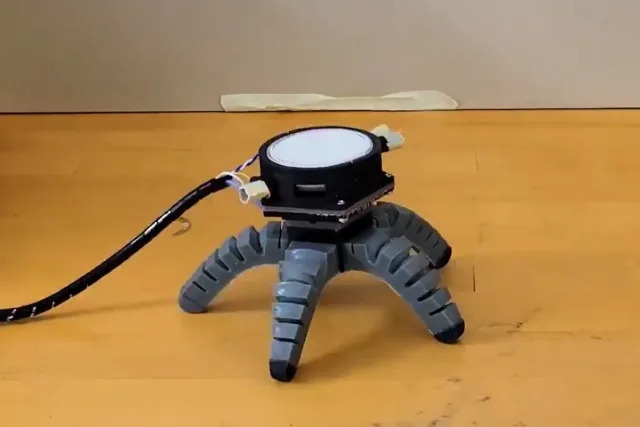Mushroom learns to crawl after being given robot body
Anthony CuthbertsonThu, 5 September 2024 at 2:24 am SGT2-min read
Engineers have created a new type of robot that places living fungi behind the controls.
The biohybrid robot uses electrical signals from an edible type of mushroom called a king trumpet in order to move around and sense its environment.
Developed by an interdisciplinary team from Cornell University in the US and Florence University in Italy, the machine could herald a new era of living robotics.
“Living systems respond to touch, they respond to light, they respond to heat, they respond to even some unknowns, like signals,” said Anand Mishra, a research associate in the Organic Robotics Lab at Cornell.
ADVERTISEMENT
Advertisement
“That’s why we think, OK, if you wanted to build future robots, how can they work in an unexpected environment? We can leverage these living systems, and any unknown input comes in, the robot will respond to that.”

Researchers from Cornell University in the US and the University of Florence in Italy placed a species of edible mushroom within a robot body (Robert Shepherd)
Different inputs, such as ultraviolet light, resulted in different outcomes for the way the robot moved. A video of one of the mushroom-controlled robots shows it moving slowly across a surface by pumping its robotic legs. Another biohybrid robot uses a wheeled system in order to move around.
Combining this mobility with the fungi’s ability to sense chemical and biological signals could prove useful in a range of applications, according to the researchers.
